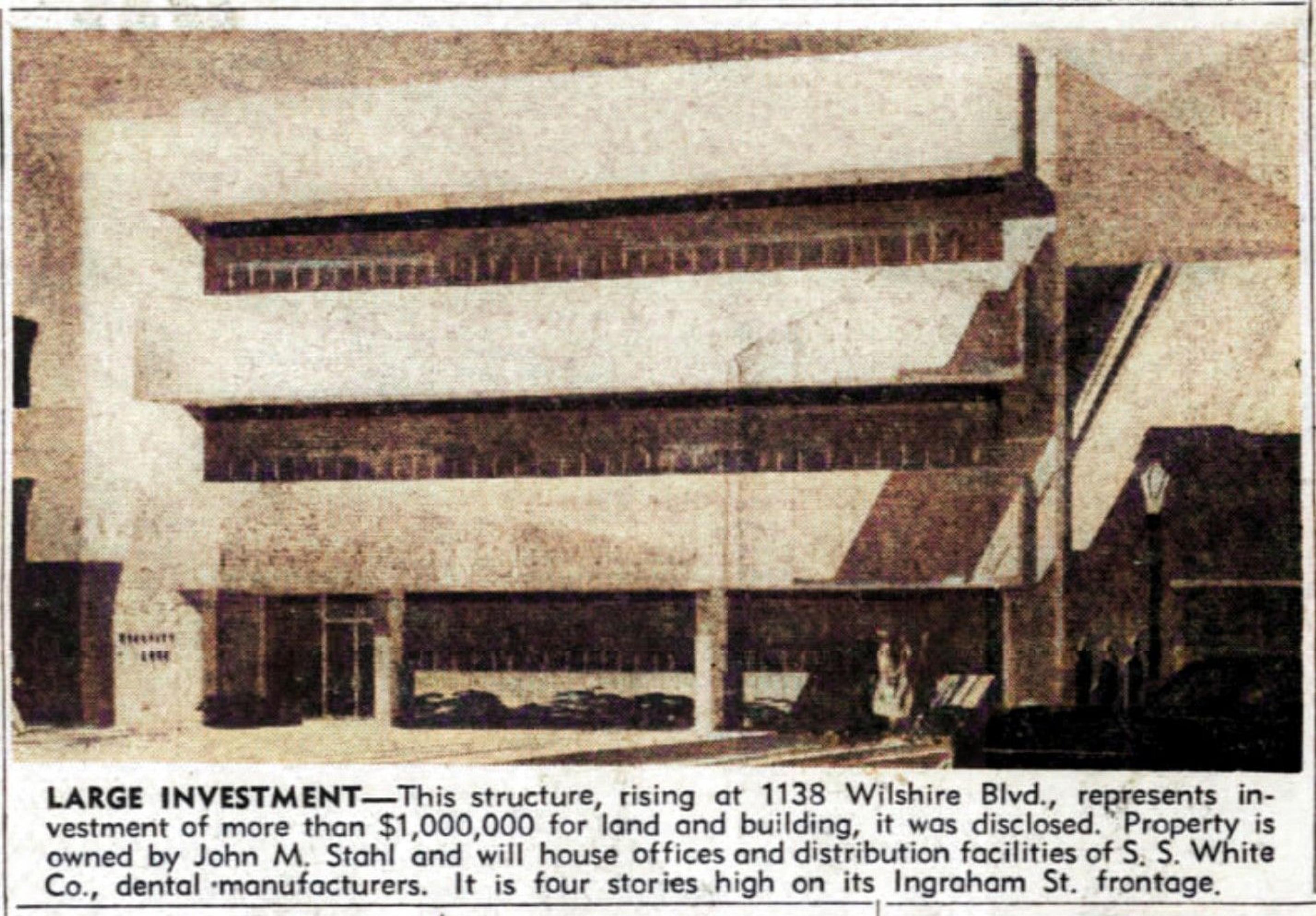Over in Mid-City, on Wilshire Boulevard near the corner of Lucas Street, there’s an unassuming Late Moderne commercial structure. It was built in the fall of 1951, of precast concrete construction, designed by the architectural firm of McClellan, MacDonald & Markwith, its principal designer being Jack H. MacDonald. Construction was by Buttress & McClellan.
So, as you might imagine, it and its corner neighbors are due to be replaced by a Newport Beach development concern called PacTen Partners (so named because its partners were all athletes at PacTen universities with 140 luxury condominiums. PacTen have secured financing “from an overseas capital source,” and hired KTGY to design the TOC-benefitting, 185-foot tower.
You know I hear you say, I don’t, like, get this building. Perhaps it’s not the easiest building in the world to love. But I bet I know who _does_ love it! That nutburger over on Skyscraperpage who kept posting about Jack MacDonald a while back. Who kept going on and on and on and putting up picture after picture after picture of MacDonald-designed Mid-Century commercial buildings. God, what a weirdo.
What I find most charming about this rendering is that they—evidently—intend to remove the “Wilshire Special” streetlamp.
Here’s something else I find pretty amusing. See 1138’s neighbor, the goofy-looking putty-colored 1980s thing? That structure, 1140/50 Wilshire was, in fact, built in 1904. It had a stucco job in 1984:
1140/50 Wilshire was built back when Wilshire Blvd. was still known as Orange Street. Image from the Laskey Collection at LAPL.
About Nathan Marsak
NATHAN MARSAK says: “I came to praise Los Angeles, not to bury her. And yet developers, City Hall and social reformers work in concert to effect wholesale demolition, removing the human scale of my town, tossing its charm into a landfill. The least I can do is memorialize in real time those places worth noting, as they slide inexorably into memory. In college I studied under Banham. I learned to love Los Angeles via Reyner’s teachings (and came to abjure Mike Davis and his lurid, fanciful, laughably-researched assertions). In grad school I focused on visionary urbanism and technological utopianism—so while some may find the premise of preserving communities so much ill-considered reactionary twaddle, at least I have a background in the other side. Anyway, I moved to Los Angeles, and began to document. I drove about shooting neon signs. I put endless miles across the Plains of Id on the old Packard as part of the 1947project; when Kim Cooper blogged about some bad lunch meat in Compton, I drove down to there to check on the scene of the crime (never via freeway—you can’t really learn Los Angeles unless you study her from the surface streets). But in short order one landmark after another disappeared. Few demolitions are as contentious or high profile as the Ambassador or Parker Center; rather, it is all the little houses and commercial buildings the social engineers are desperate to destroy in the name of the Greater Good. The fabric of our city is woven together by communities and neighborhoods who no longer have a say in their zoning or planning so it’s important to shine a light on these vanishing treasures, now, before the remarkable character of our city is wiped away like a stain from a countertop. (But Nathan, you say, it’s just this one house—no, it isn’t. Principiis obsta, finem respice.) And who knows, one might even be saved. Excelsior!””
Nathan’s blogs are: Bunker Hill Los Angeles, RIP Los Angeles & On Bunker Hill.
